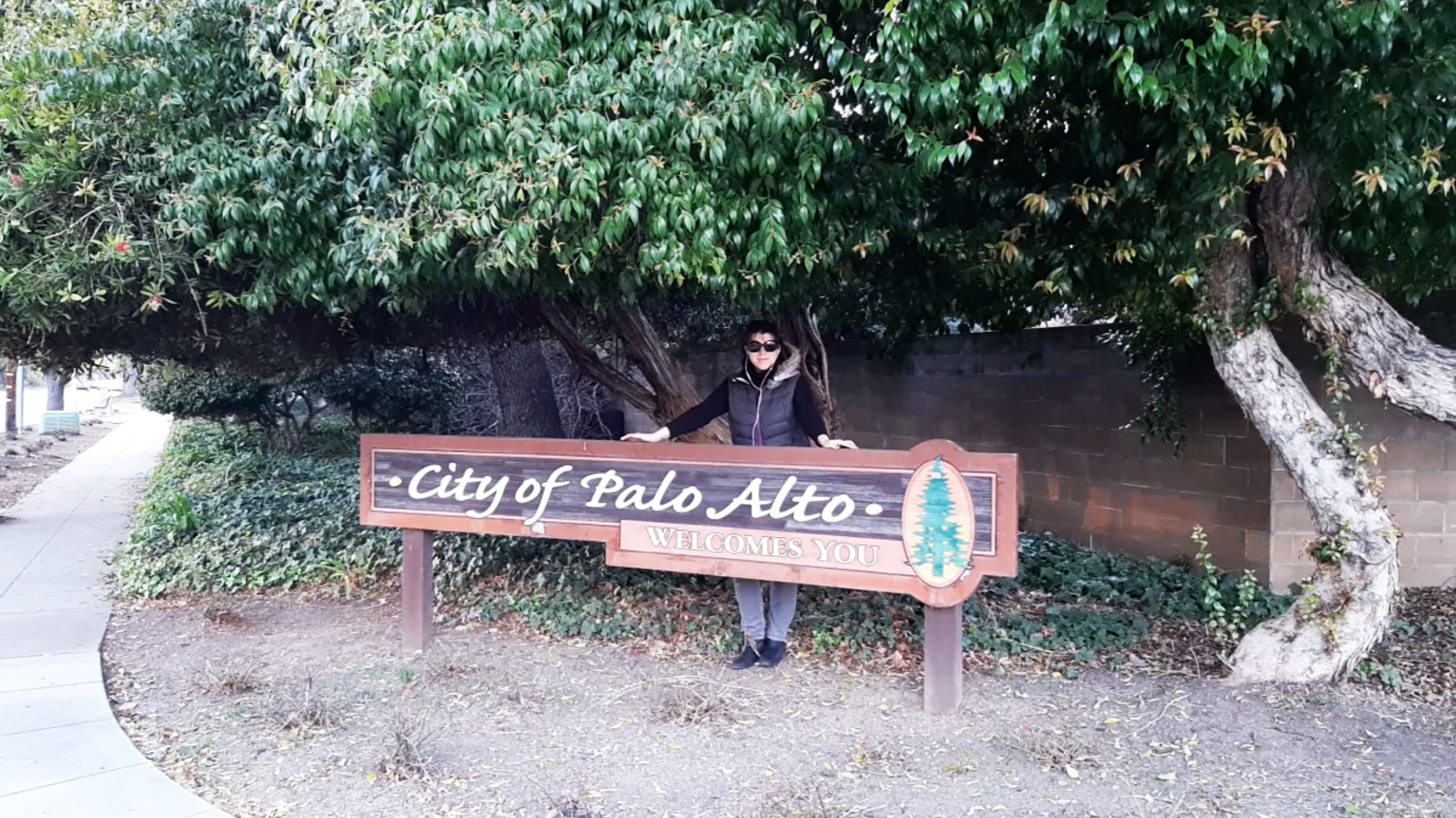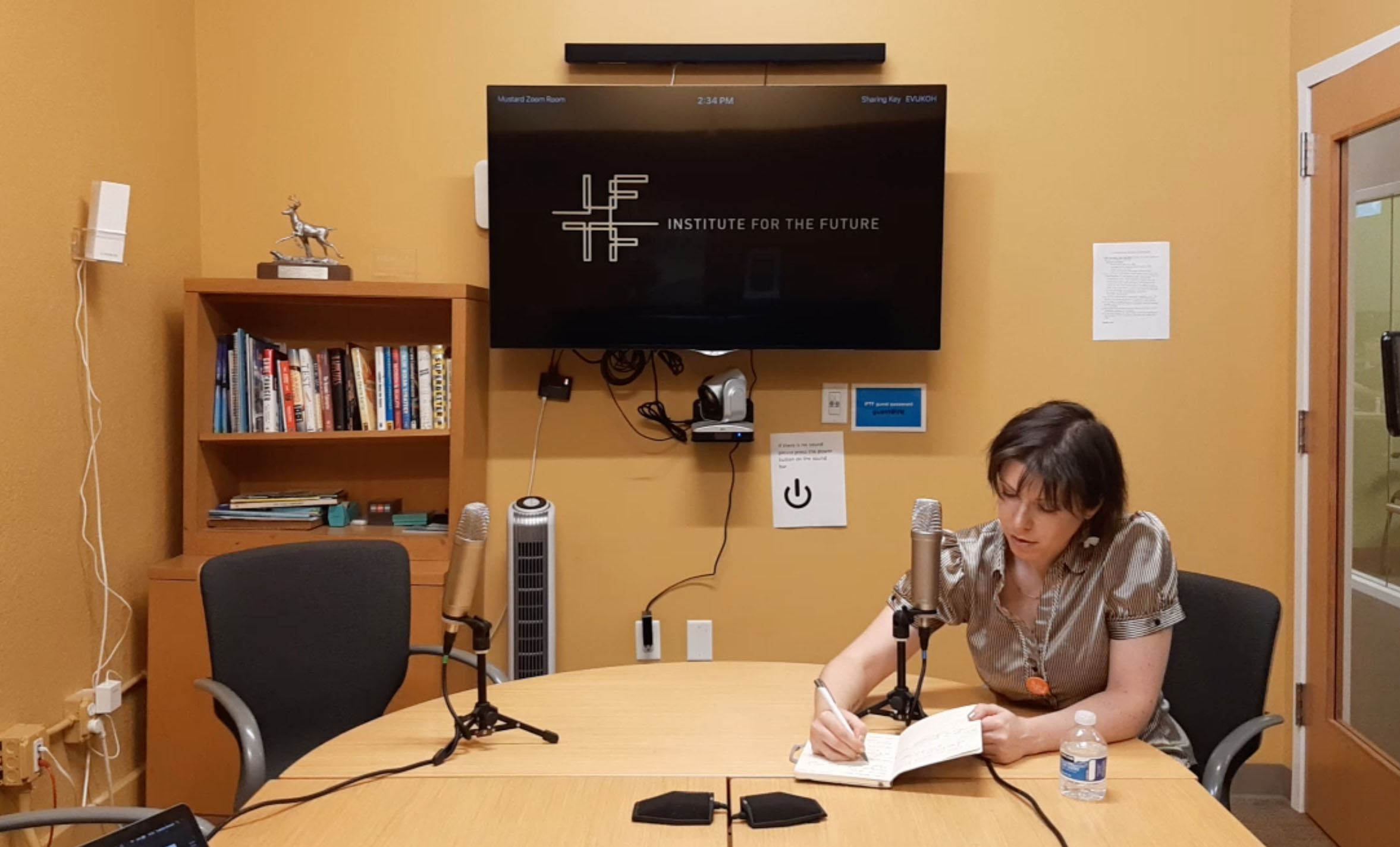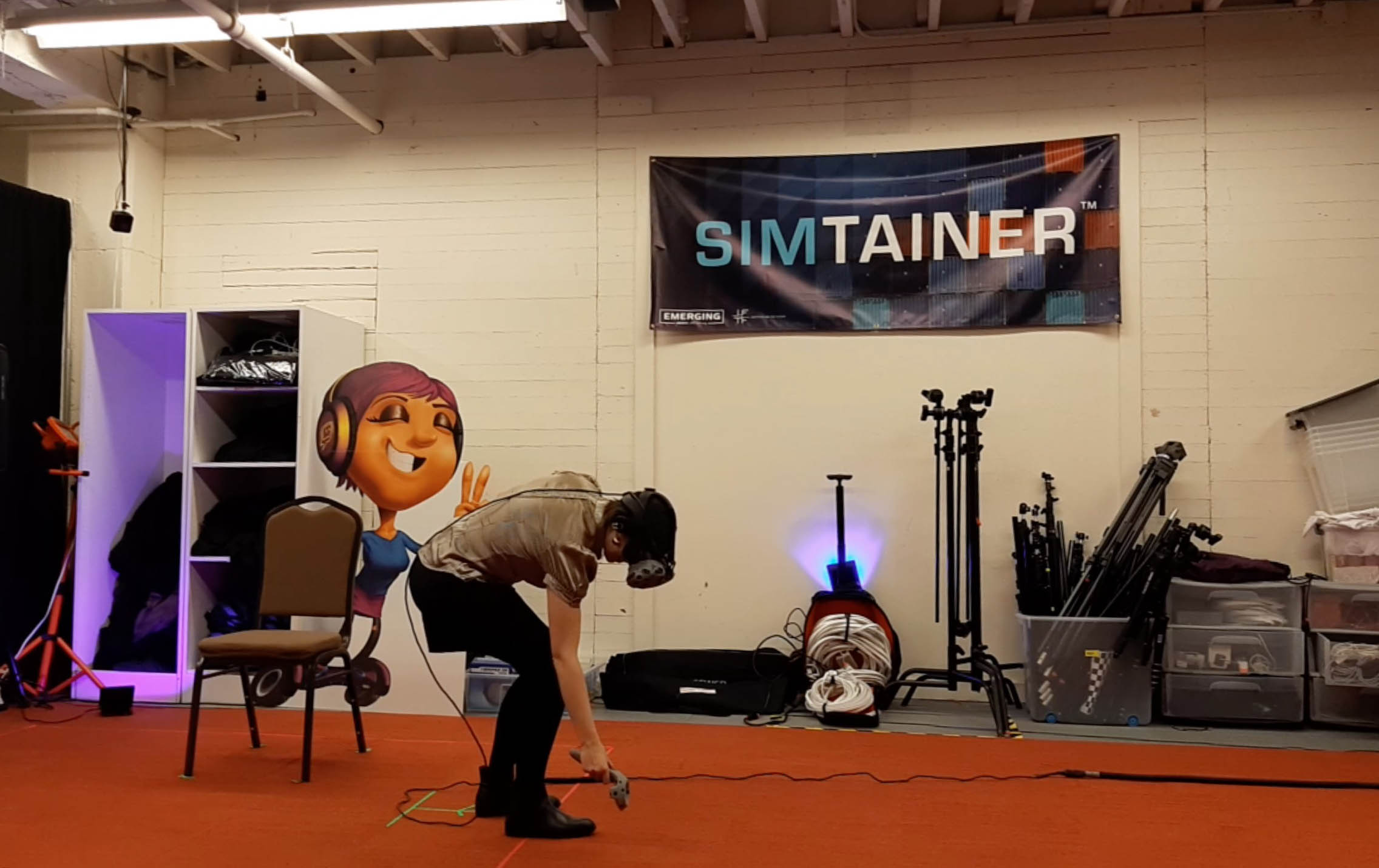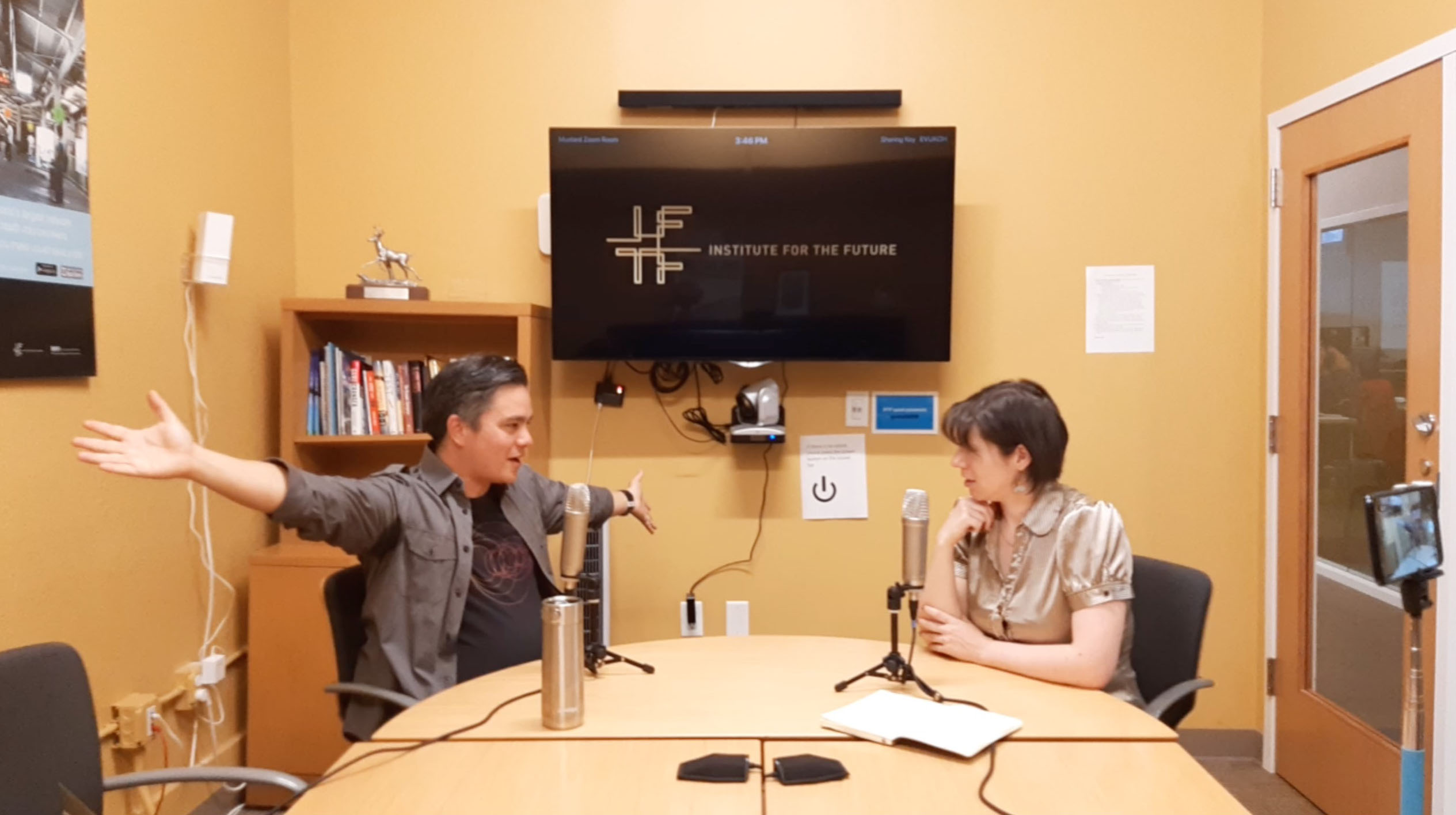A provoking, plausible, and desirable future
with Toshi Anders Hoo (IFTF)Download this episode in mp3 (30.24 MB).
This work is licensed under a Creative Commons Attribution-NonCommercial-ShareAlike 4.0 International License.
Toshi Anders Hoo is the Director of the Emerging Media Lab (EML) at Institute for the Future (IFTF). The EML researches and prototypes the future of human communication and collaboration, and their work has been featured at venues and events around the world including The United Nations, Ars Electronica, and the Dubai Future Foundation. Hoo's work has focused for over 2 decades on exploring, experimenting and implementing projects utilizing emerging media technologies for museums, non-profits, commercial clients and artistic endeavors. Hoo also served as media technology advisor to famed futurist, Ray Kurzweil and has produced projects for NASA and the United Nations.
The focus of EML is around human connection, collaboration, and communication through mediated technologies or mediated experiences. Toshi and his team are busy developing "forecasts" for the future, where "future" means about ten years ahead. They look at emergent signals that may "not appear on the radar, may not be established enough to qualify as a trend," but reveal something about our collective future. "We're looking at what we call emergent signals, signals of change, that are happening" (at min 3:50). During our conversation, Toshi shared the methodologies, the tools, and the goals at IFTF. If you think the future is something that concerns you, this interview will give you some interesting food for thought.
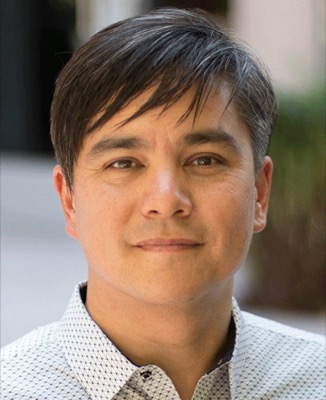
Fig. 1 - Toshi Anders Hoo.
This interview was recorded in Palo Alto, CA, on February 20, 2020, only a few days before COVID-19 forced us into a global lockdown. I have waited one year to publish this interview, because I felt that during the past months the world's attention was somewhere else - as it should have been. Publishing content that didn't relate to COVID seemed out of synch with reality. But a year later, I think that this interview shows us a clearer picture of where we were before the pandemic, and where we are today (today means March 2021).
Highlights from this episode
At minute 5:42: "If you look at the neuroscience, humans are pretty bad at thinking about the future."
At minute 7:24: "We're at this interesting time in history in which in some ways we're kind of receiving these superpowers, the ability to see anything anywhere in the world, to go anywhere through virtual reality, to control life itself through biotechnology. And at this moment, we're also simultaneously feeling like we're on the verge of collapse, right? And why is that?"
At minute 10:33: "My kind of passion and practice has always been, how do we look beyond the novelty factor? Study these new media technologies, understand what are the new interactions, what are the new affordances? What are the things we could do with these media formats? What is the new paradigm that's different than the previous? And then, if you believe that storytelling is how we understand the world, and how we map the world, and that metaphors are kind of the building blocks for stories, the question really that pours through all the work that I do is, what are the new stories that we could tell and what are the new conversations we can have that we couldn't have before?"
At minute 13:04: "People have been working in AI for decades. VR has been around for decades. What's different right now is it's becoming commercialized."
At minute 13:12: "Many people will say [that] technology is a tool, so it's kind of neutral, and it depends on what you do with it. I would say that's true when you're in a small scale experimental environment, where an artist or a researcher could do anything with it, and it could be good or bad. When you add into that market driven forces or, in the case of China, political forces, you know the technology takes on the power structure and the values of those kind of scaling forces."
At minute 16:48: "We're at this period, where I think we're hopefully getting more conscious, and we're starting to ask questions like, well, should we be creating this? And yes, we can create this now and today, and we're moving fast... but what are the drawn out consequences of this? What are the unintended, possible unintended consequences of this?"
At minute 19:40: "How do you draw 1st, 2nd and 3rd order consequences [from something], so that you can begin to see the chain of plausibility to get to a more provocative statement?"
At minute 20:30: "Alvin Toffler, the famous futurist, said that there are three types of futures. There's probable futures, there's preferable futures, and there's plausible futures. So, for plausible futures you need artists to think what's possible. Like, all the possibilities, right? For probable futures, you need statisticians and mathematicians. For preferable futures, you need politicians, because you need to think about, okay, here's all the possibilities, here's what might happen. But what do we want as a people as a humanity? So, we try to help organizations integrate thes foresight practices in to help them have better conversations with their stakeholders, whether it is the government or a corporation."
At minute 27:44: "Our goal here at IFTF is to empower the world to think more creatively, strategically about the future. And that means everyone. We think the world is gonna be a better place if everyone is able to think more creatively and strategically about the future. And if we're able to do that collaboratively."
People, places, and devices mentioned in the interview
- 1:20 RAND Corporation, non-profit institution that helps improve policy and decisionmaking through research and analysis: https://www.rand.org/
- 1:30 ARPANET, the predecessor of the Internet
- 20:31 Alvin Toffler, futurist
- 21:19 Ethical OS Toolkit: https://ethicalos.org
- 23:17 Museum of the Future in Dubai: https://museumofthefuture.ae
- 30:51 William Gibson, writer
Page created: March 2021
